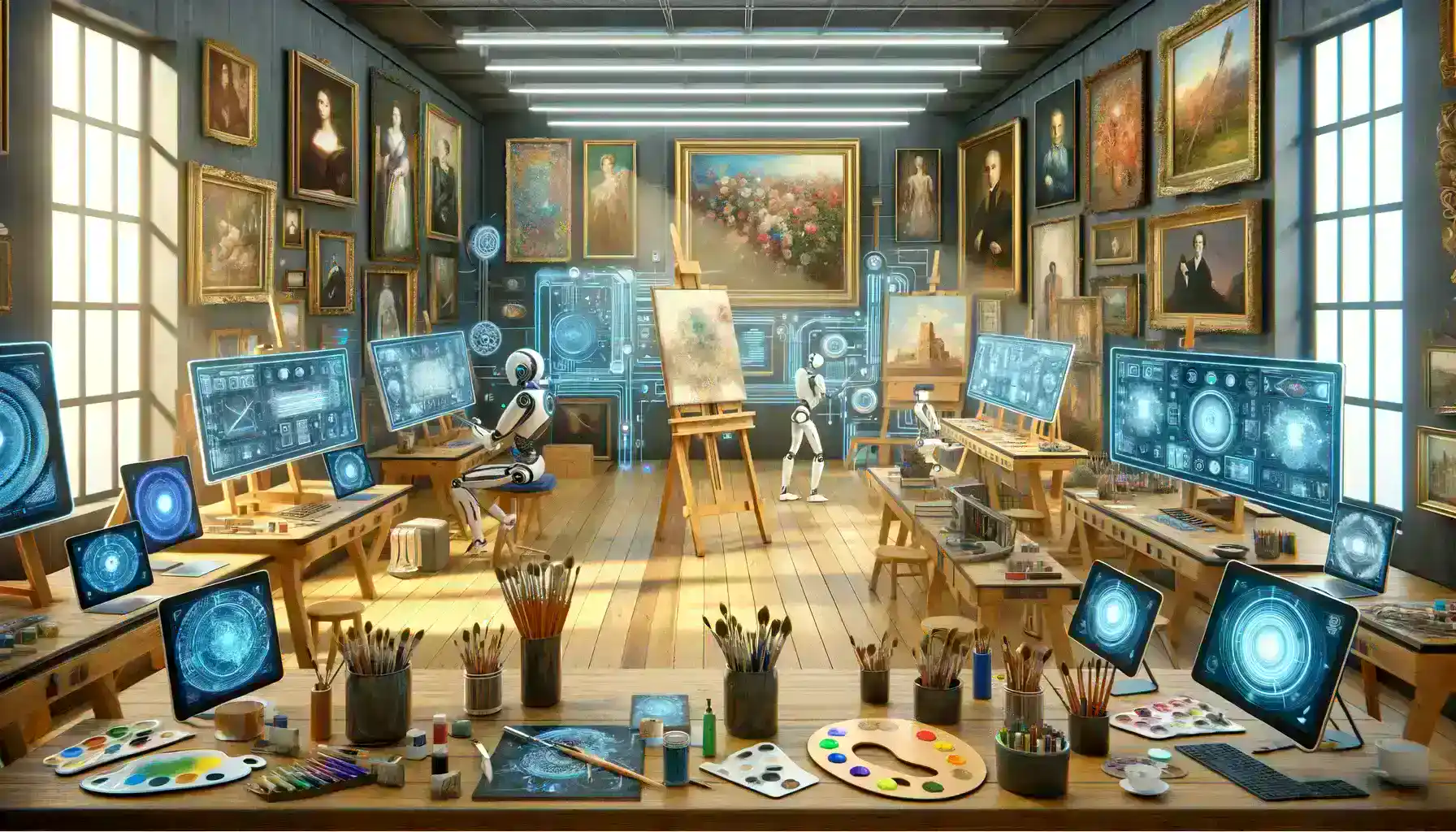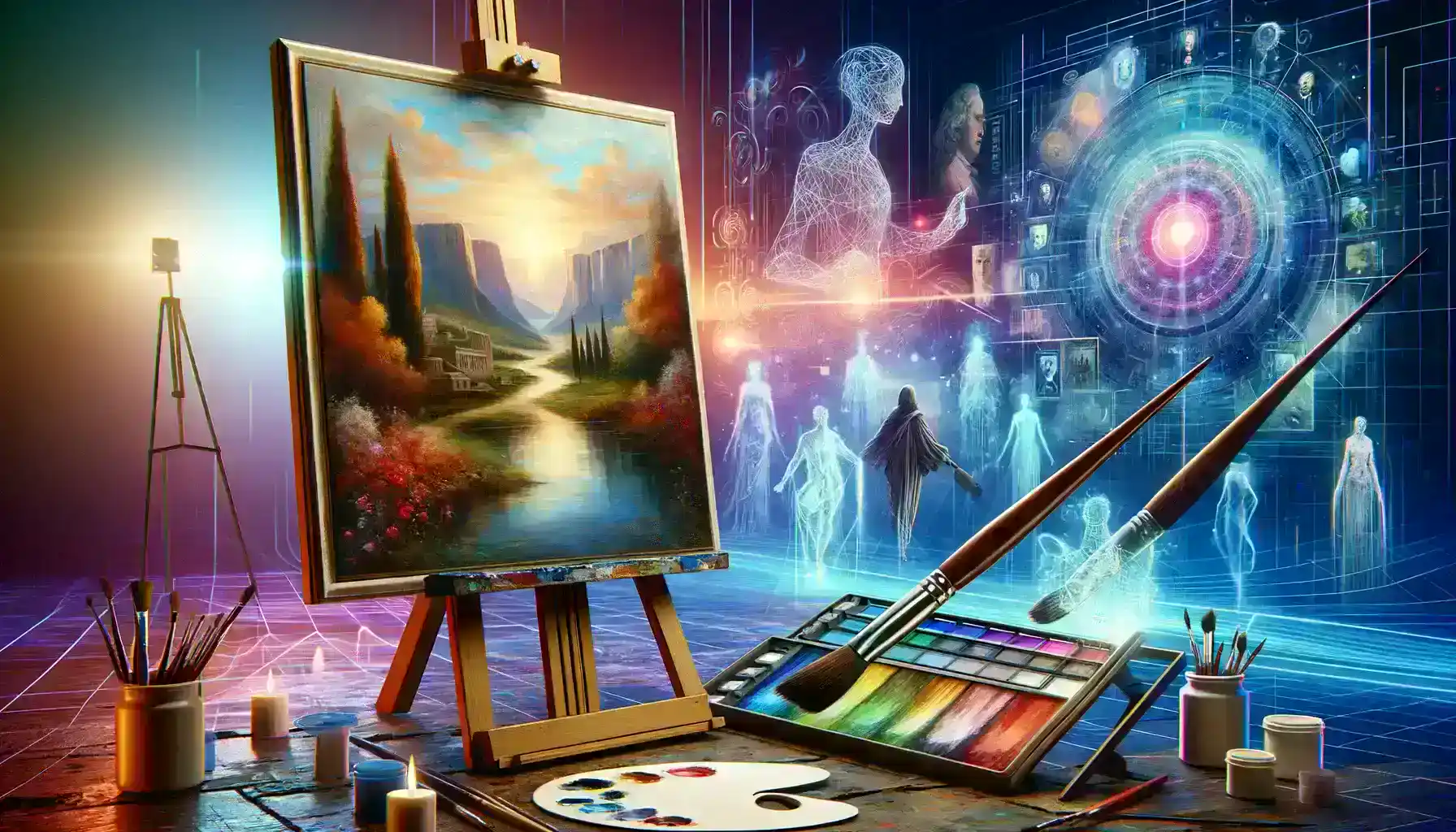Table of Contents
Artistic Evolution
Artistic evolution is a dynamic and continuous process that encompasses the growth, change, and development of artistic expression within the realm of traditional painting techniques. It signifies the journey artists undertake to refine their skills, explore new styles, and adapt to the ever-evolving landscape of creative possibilities. This concept extends beyond the individual artist, encompassing entire artistic movements and periods, as well as the collective progress of art as a whole.
Throughout history, artists have consistently engaged in a process of artistic evolution. They have responded to shifts in culture, technology, and societal values, resulting in a rich tapestry of artistic movements and styles. The transition from classical realism to impressionism marked a significant shift in artistic evolution, driven by a desire to capture the fleeting impressions of light and color in the late 19th century.
Artistic evolution represents the ongoing journey of artists and art forms as they adapt, transform, and respond to the world around them. It is a vital force in preserving cultural heritage, fostering creativity, and ensuring the enduring relevance of traditional painting techniques in our ever-changing society.
Rise of AI in Arts
- Emergence of AI in the Arts: Over the past decade, artificial intelligence (AI) has made significant inroads into the arts world. AI, a technology that leverages algorithms and machine learning, is being harnessed to perform tasks traditionally the domain of human artists. This includes not only visual arts but also music, literature, and even performance arts.
- AI’s Role in Creative Processes: AI is transforming creative processes by offering innovative tools and methodologies. In the context of traditional painting techniques, AI is changing how artists conceptualize, plan, and execute their artworks. It assists artists in generating ideas, suggesting color palettes, and exploring new artistic directions.
- Cross-Disciplinary Application: AI’s impact extends across various artistic disciplines, but we’ll concentrate on the visual arts for this article’s focus on traditional painting techniques. AI is being applied to the creation of digital paintings, illustrations, and even physical art forms, augmenting artists’ abilities and expanding their creative horizons.
- Examples of AI in Art: The creation of artworks by AI algorithms like Google’s DeepDream or artists like Robbie Barrat’s use of AI to generate unique and surreal paintings.

AI influencing and enhancing artistic evolution
- AI-Generated Ideas: AI algorithms assist artists in brainstorming and generating creative concepts, offering a wellspring of inspiration for traditional painting.
- AI-Assisted Brushwork: AI-powered tools and software enhance an artist’s brushwork, helping them refine their techniques and achieve desired effects.
- Personalized Artistic Styles: AI enables artists to develop and refine their unique artistic styles, fostering individuality and creativity.
- Speed and Efficiency: AI streamlines art production, making the creative process more efficient and allowing artists to experiment and iterate more quickly.
- Collaboration with AI: Artists are collaborating with AI algorithms, resulting in artworks that blend human creativity with machine intelligence.
- Preservation and Restoration: AI contributes to the preservation and restoration of traditional artworks, ensuring their longevity and cultural significance.
- Ethical and Philosophical Implications: The integration of AI in art raises ethical and philosophical questions about authorship, authenticity, and the evolving role of artists in the digital age.
This overview provides a glimpse into various ways AI is influencing artistic evolution within traditional painting techniques, while also setting the stage for the in-depth exploration of each of these areas in the article’s main body.
1. Enhanced Creativity through AI-Generated Ideas
AI algorithms have the capacity to generate unique and unconventional ideas that can inspire artists in remarkable ways. For instance, IBM’s Watson, a well-known AI platform, can analyze vast amounts of data and suggest novel connections and concepts. Artists can input keywords or themes, and Watson can provide a wealth of relevant information and artistic inspirations.
The collaboration between artist Mario Klingemann and Google’s Deep Dream. Deep Dream utilizes neural networks to generate surreal and dreamlike imagery. Klingemann used this tool to infuse his artistic creations with a sense of unpredictability and experimentation, pushing the boundaries of what traditional painting techniques can achieve.
The impact of AI-generated ideas is profound. It challenges artists to think beyond their usual thought patterns, fostering innovation and encouraging them to explore uncharted artistic territories. By introducing unexpected elements into their work, artists can create art that surprises, captivates, and resonates with viewers on a deeper level.
2. AI-Assisted Brushwork and Techniques
AI-powered tools can significantly aid painters in refining their brushwork and techniques. One such tool is NVIDIA’s GauGAN, an AI-driven software that transforms simple sketches into detailed and realistic landscapes. Artists can use GauGAN to experiment with various brush strokes and textures, helping them refine their painting skills.
Artbreeder is a platform, which employs AI to blend and manipulate images. Artists can use Artbreeder to create new visual styles and experiment with different techniques, ultimately enhancing their traditional painting methods. The platform offers sliders that allow users to adjust the level of abstraction, realism, and other artistic elements.
AI’s role in assisting painters goes beyond digital tools. Robots equipped with AI technology can mimic an artist’s brushwork, replicating their strokes with precision. Artists like David Cope have even trained robots to recreate famous paintings by imitating the styles of renowned artists like Van Gogh.
AI’s contribution to traditional painting techniques lies in its ability to help artists master their craft by offering new ways to experiment, practice, and refine their skills.

3. Personalized Artistic Styles with AI
AI empowers artists to develop and refine their unique artistic styles, contributing to the ongoing process of Artistic Evolution. Platforms like Runway ML enable artists to create custom machine-learning models that can generate art in their distinct styles. For example, an artist can train a model to produce paintings with a specific color palette, brushwork, or thematic elements that reflect their personal style.
One notable case is the collaboration between artist Mario Klingemann and Runway ML, which demonstrates how AI can assist artists in cultivating and expressing their artistic individuality within the context of Artistic Evolution. Klingemann trained a model using his own artworks, enabling the AI to generate pieces in his signature style.
An excellent illustration of this is the AI-driven art project known as “DeepDream.” Developed by Google, DeepDream utilizes neural networks to generate surreal and dreamlike imagery, offering artists a platform to explore entirely new visual styles.
Artists have used DeepDream to feed their own artworks or concepts to the AI, resulting in fascinating and often surreal results that challenge conventional artistic norms. This personalized approach allows artists not only to infuse their identity into their work but also to venture into uncharted artistic territories, pushing the boundaries of traditional painting techniques and contributing to the ongoing Artistic Evolution.
4. Speed and Efficiency in Art Production
AI streamlines and expedites the art creation process, providing significant benefits to artists engaged in the process of Artistic Evolution. For instance, an AI-powered tool called DALL-E, developed by OpenAI, can generate images from text descriptions. Artists can use this tool to quickly visualize their ideas, saving time in the initial concept development stage, and accelerating the pace of Artistic Evolution.
Additionally, AI-driven software can automate repetitive tasks in the creation of digital art, such as generating complex backgrounds or filling in intricate details. This automation allows artists to focus their time and energy on the more creative and expressive aspects of their work, thus enhancing their efficiency in contributing to the ongoing Artistic Evolution.
Notable studios like Studio Drift have employed AI-driven algorithms to create stunning digital installations, such as “Fragile Future,” which features delicate sculptures composed of real dandelion seeds and LEDs. AI’s efficiency in producing complex and intricate artworks highlights its potential to revolutionize art production, furthering the speed and efficiency of Artistic Evolution.
5. Collaborative Possibilities with AI
AI opens up exciting opportunities for collaborations between artists and intelligent algorithms, facilitating innovative approaches to Artistic Evolution. Artists can work in tandem with AI to create art that blends human creativity with machine intelligence in remarkable ways.
Refik Anadol and Google’s Magenta, an AI platform focused on creativity and art. Anadol used Magenta‘s algorithms to transform data from Los Angeles’ urban life into mesmerizing visual and audio installations, demonstrating the potential of AI to contribute to Artistic Evolution. The result was a breathtaking fusion of art and AI, where the AI system interpreted the city’s data and Anadol’s creative vision translated it into immersive artworks, pushing the boundaries of traditional art forms.
Another avenue for collaboration is the use of AI-generated music to inspire visual art as part of the ongoing Artistic Evolution. Artists can use AI-generated music compositions as a source of inspiration for their paintings, creating a dynamic synergy between different artistic disciplines and fostering new creative directions.

Conclusion
In the ever-evolving world of art, the intersection of technology and creativity has ushered in a new era of innovation and inspiration. As we’ve explored in this article, the integration of artificial intelligence (AI) is significantly shaping the trajectory of Artistic Evolution within traditional painting techniques.
From generating creative ideas to refining brushwork, from fostering personalized artistic styles to expediting art production, AI has become a formidable ally for artists on their journey of artistic growth.
The incorporation of AI into traditional painting techniques represents not a threat to artistry, but a beacon of opportunity and inspiration. As we embrace the collaborative potential of AI, we usher in a bright future for Artistic Evolution, where the fusion of human creativity and machine intelligence promises to redefine the boundaries of artistic expression.
With AI as a partner in the ongoing journey of artistic growth, traditional painting techniques are poised to flourish, adapt, and continue their timeless evolution in the digital age.





